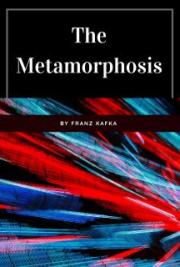April 25th, As Usual
By EDNA FERBER
From Ladies Home Journal
Mrs. Hosea C. Brewster always cleaned house in September and April. She started with the attic and worked her purifying path down to the cellar in strict accordance with Article I, Section I, Unwritten Rules for House Cleaning. For twenty-five years she had done it. For twenty-five years she had hated it--being an intelligent woman. For twenty- five years, towel swathed about her head, skirt pinned back, sleeves rolled up--the costume dedicated to house cleaning since the days of What's-Her-Name, mother of Lemuel (see Proverbs)--Mrs. Brewster had gone through the ceremony twice a year.
Furniture on the porch, woolens on the line, mattresses in the yard--everything that could be pounded, beaten, whisked, rubbed, flapped, shaken or aired was dragged out and subjected to one or all of these indignities. After which, completely cowed, they were dragged in again and set in their places. Year after year, in attic and in cellar, things had piled up higher and higher--useless things, sentimental things; things in trunks; things in chests; shelves full of things wrapped up in brown-paper parcels.
And boxes--oh, above all, boxes; pasteboard boxes, long and flat, square and oblong, each bearing weird and cryptic pencilings on one end; cryptic, that, is to anyone except Mrs. Brewster and you who have owned an attic. Thus "H's Fshg Tckl" jabberwocked one long slim box. Another stunned you with "Cur Ted Slpg Pch." A cabalistic third hid its contents under "Slp Cov Pinky Rm." To say nothing of such curt yet intriguing fragments as "Blk Nt Drs" and "Sun Par Val." Once you had the code key they translated themselves simply enough into such homely items as Hosey's fishing tackle, canvas curtains for Ted's sleeping porch, slip-covers for Pinky's room, black net dress, sun- parlour valence.
The contents of those boxes formed a commentary on normal American household life as lived by Mr. and Mrs. Hosea C. Brewster, of Winnebago, Wisconsin. Hosey's rheumatism had prohibited trout fishing these ten years; Ted wrote from Arizona that "the li'l' ol' sky" was his sleeping-porch roof and you didn't have to worry out there about the neighbours seeing you in your pyjamas; Pink's rose-cretonne room had lacked an occupant since Pinky left the Winnebago High School for the Chicago Art Institute, thence to New York and those amazingly successful magazine covers that stare up at you from your table--young lady, hollow chested (she'd need to be with that décolletage), carrying feather fan. You could tell a Brewster cover at sight, without the fan. That leaves the black net dress and sun-parlour valance. The first had grown too tight under the arms (Mrs. Brewster's arms); the second had faded.
Now don't gather from this that Mrs. Brewster was an ample, pie-baking, ginghamed old soul who wore black silk and a crushed-looking hat with a palsied rose atop it. Nor that Hosea C. Brewster was spectacled and slippered. Not at all. The Hosea C. Brewsters, of Winnebago, Wisconsin, were the people you've met on the veranda of the Moana Hotel at Honolulu, or at the top of Pike's Peak, or peering into the restless heart of Vesuvius. They were the prosperous Middle-Western type of citizen who runs down to Chicago to see the new plays and buy a hat, and to order a dozen Wedgwood salad plates at Field's.
Mrs. Brewster knew about Dunsany and Georgette and alligator pears; and Hosea Brewster was in the habit of dropping around to the Elks' Club, up above Schirmer's furniture store on Elm Street, at about five in the afternoon on his way home from the cold-storage plant. The Brewster house was honeycombed with sleeping porches and sun parlours and linen closets, and laundry chutes and vegetable bins and electric surprises as well-to-do Middle Western home is likely to be.
That home had long ago grown too large for the two of them--physically, that is. But as the big frame house had expanded, so had they--intolerance and understanding humanness--until now, as you talked with them, you felt that there was room and to spare of sun-filled mental chambers, and shelves well stored with experience, and pantries and bins and closets for all your worries and confidences.
But the attic! And the cellar! The attic was the kind of attic every woman longs for who hasn't one and every woman loathes who has. "If I only had some place to put things in!" wails the first. And, "If it weren't for the attic I'd have thrown this stuff away long ago," complains the second. Mrs. Brewster herself had helped plan it. Hardwood floored, spacious light, the Brewster attic revealed to you the social, aesthetic, educational and spiritual progress of the entire family as clearly as if a sociologist had chartered it.
Take, for example (before we run down to the cellar for a minute), the crayon portraits of Gran'ma and Gran'pa Brewster. When Ted had been a junior and Pinky a freshman at the Winnebago High School the crayon portraits had beamed down upon them from the living-room wall. To each of these worthy old people the artist had given a pair of hectic pink cheeks. Gran'ma Brewster especially, simpering down at you from the labyrinthian scrolls of her sextuple gold frame, was rouged like a soubrette and further embellished with a pair of gentian-blue eyes behind steel-bowed specs. Pinky--and in fact the entire Brewster household--had thought these massive atrocities the last word in artistic ornament. By the time she reached her sophomore year, Pinky had prevailed upon her mother to banish







